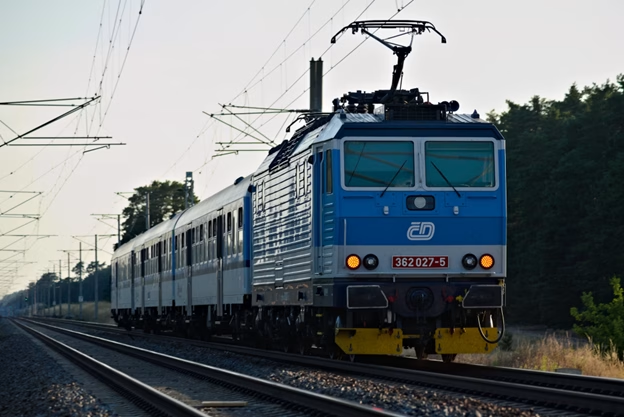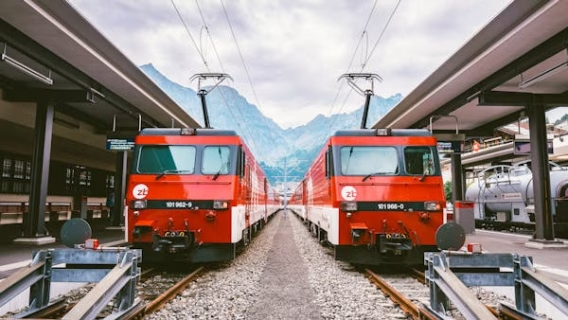Rail electrification systems require routine inspections, specialized tools, and targeted repairs to operate safely and efficiently. Critical components such as overhead wires, third rails, and substations demand precise upkeep using advanced equipment like drones, tensioning systems, and voltage detectors. Consistent maintenance prevents failures and ensures uninterrupted service.
Because trains rely entirely on these power delivery systems, proper maintenance is essential for operational reliability and passenger safety. From high-voltage lines to structural supports, every element must perform under demanding conditions.
This article outlines the key tools, components, and procedures involved in maintaining rail electrification systems, as well as the challenges technicians routinely face.
Key Components of Rail Electrification Systems
Rail electrification systems depend on a few core components to deliver electrical power with high reliability. The most common method is the overhead line system, or catenary, which suspends wires above the track to supply energy to the train.
These lines must remain properly tensioned and aligned to avoid contact loss, wear, or arcing. Routine visual inspections and precise tension adjustments are critical to maintaining system performance.
In third rail systems, power is supplied through an additional rail mounted alongside the track. This component must remain clean, dry, and free of corrosion or debris to ensure steady contact with the train’s collector shoe.
Inspecting for damage or pitting is essential, especially in areas with heavy traffic or adverse weather. Heating elements or protective covers may be used in colder climates to prevent ice formation and power interruptions.
Substations and power supply equipment form the distribution backbone. These facilities convert high-voltage power from the grid into usable voltages for rail systems and regulate delivery to the overhead wires or third rail.
Key equipment, including transformers, circuit breakers, and insulators, must be inspected regularly to detect heat stress, leaks, or insulation breakdown. Accurate voltage monitoring and thermal scanning can flag issues early. Proper grounding and insulation practices using a reliable splice kit for transit systems are non-negotiable for safety and long-term system stability.
Essential Tools for Maintenance
Maintaining electrified rail systems requires precise, often non-contact diagnostics and specialized tools to ensure worker safety and system uptime. These tools are chosen not only for their technical accuracy but also for their ability to support rapid interventions with minimal service disruption.
- Inspection & Diagnostics: Drones, thermal imaging cameras, and LiDAR scanners enable efficient visual checks of overhead systems and third rails. These tools detect misalignments, wear points, overheating joints, and vegetation encroachment, without endangering personnel.
- Tensioning & Alignment: Hydraulic tensioning tools, laser alignment systems, and calibrated measuring gauges help maintain optimal wire sag and geometry. Correct alignment prevents pantograph wear and voltage fluctuations.
- Safety & Testing: High-voltage detectors, insulation resistance testers, and mobile grounding kits protect maintenance crews working near energized infrastructure. Pre-work verification is mandatory to ensure system de-energization and compliance with electrical safety protocols.
Equipped with the right tools, teams can diagnose and repair issues rapidly, preserving both safety and network reliability.
Common Maintenance Procedures
Effective maintenance relies on structured procedures that balance safety, precision, and operational continuity.
- Inspection: Visual and sensor-assisted inspections form the core of preventive maintenance. Crews monitor overhead contact systems, third rails, and support structures for wear, corrosion, or displacement.
Drones and thermal cameras help locate hotspots and hairline fractures in inaccessible areas. Inspections are typically scheduled during off-peak hours or maintenance windows to reduce impact on operations.
- Cleaning & Lubrication: Debris on catenary wires or third rails can cause arcing, poor contact, or accelerated degradation. Teams use non-conductive cleaning tools to remove contaminants without risking short circuits.
Lubricants are applied selectively to moving or exposed parts to prevent oxidation and mechanical wear. In coastal or humid environments, additional anti-corrosion treatments are necessary to prolong component life.
- Repairs: Speed and precision are critical during repair work. Damaged insulators, frayed contact wires, or corroded rail segments must be replaced quickly. Crews often rely on a splice kit for transit systems to restore continuity in power cables during urgent interventions.
Safety procedures, such as lockout/tagout verification, are strictly enforced before any section is accessed. Stocking pre-assembled, pre-tensioned wire sections significantly reduces repair time during catenary failures. All repair actions should be logged for future analytics and trend identification.
Challenges in Maintaining Rail Electrification Systems
Rail electrification maintenance is a high-stakes, complex undertaking that requires balancing safety, system uptime, and long-term durability. The environment, infrastructure complexity, and high-voltage exposure present consistent challenges.
- Environmental Stress: Heatwaves, freezing conditions, airborne contaminants, and coastal salt exposure all accelerate component fatigue. Overhead wires can lose tension in heat or develop ice loading in winter. Insulators degrade faster under pollution or salt spray.
- High-Voltage Hazards: Maintenance near energized systems carries inherent danger. Even minor missteps can cause serious injury or system-wide outages. Crews must be thoroughly trained and equipped with insulated tools, remote monitoring gear, and fail-safe procedures.
- Limited Access Windows: Track access for scheduled work is often constrained, especially on high-frequency corridors. Emergency repairs during service hours can lead to costly disruptions. Careful coordination with operations and contingency planning is essential.
Emerging solutions, including real-time monitoring, predictive analytics, and modular component design, are helping networks stay ahead of failure points while improving safety and minimizing downtime.
Conclusion
Maintaining rail electrification systems requires deep technical expertise, rigorous procedures, and continuous adaptation to changing conditions. From inspections and preventive cleaning to emergency repairs, every step must be executed with precision and foresight.
As electrified rail networks expand and technological demands grow, maintenance strategies must evolve. By integrating predictive tools, autonomous inspection methods, and durable materials, rail operators can extend asset life, enhance safety, and ensure long-term service continuity. Proactive maintenance is the foundation of a resilient and future-ready transportation system.


